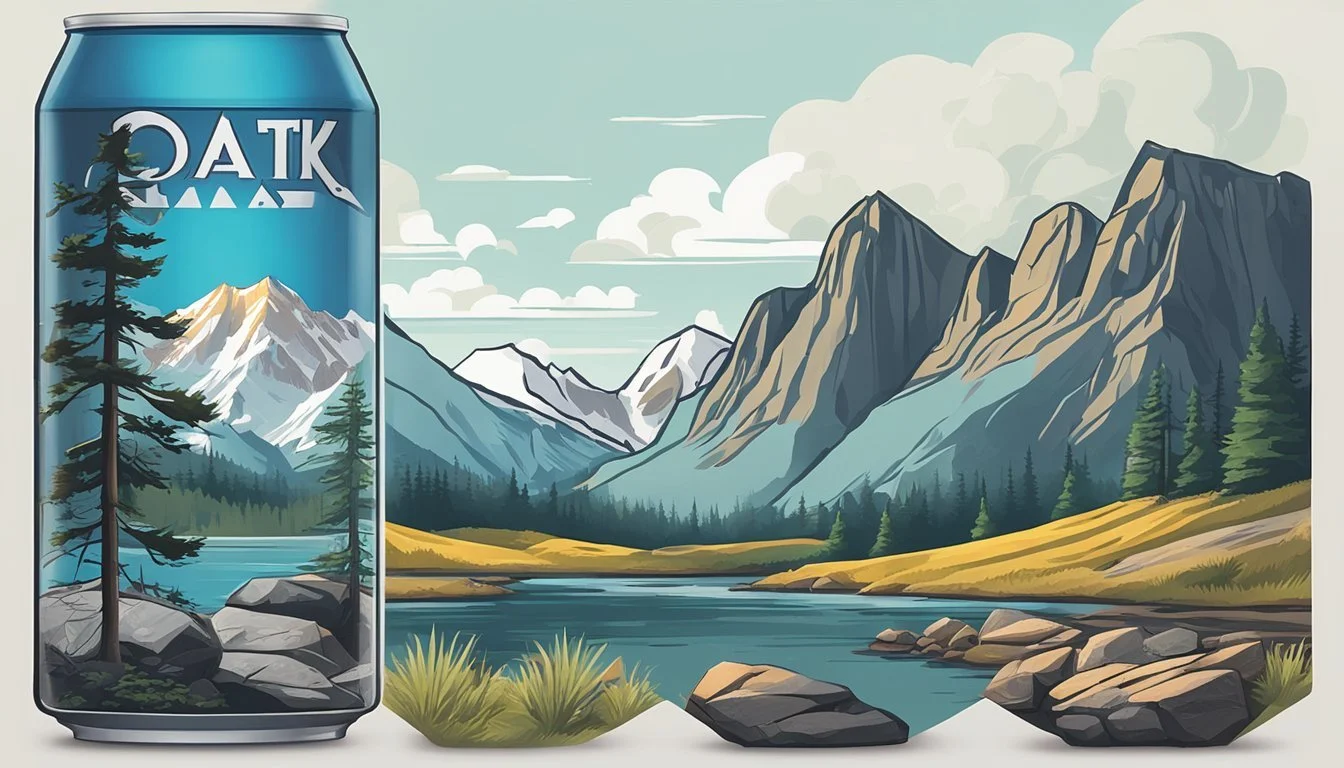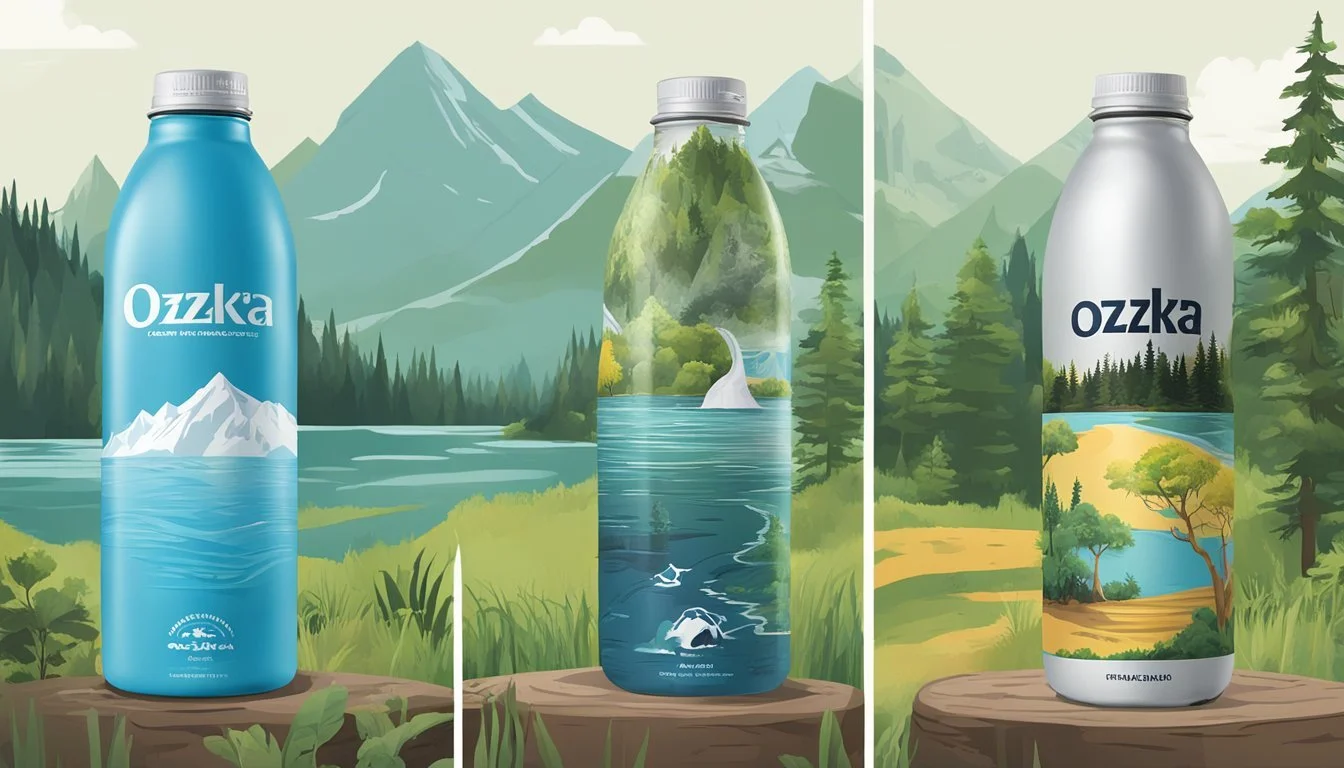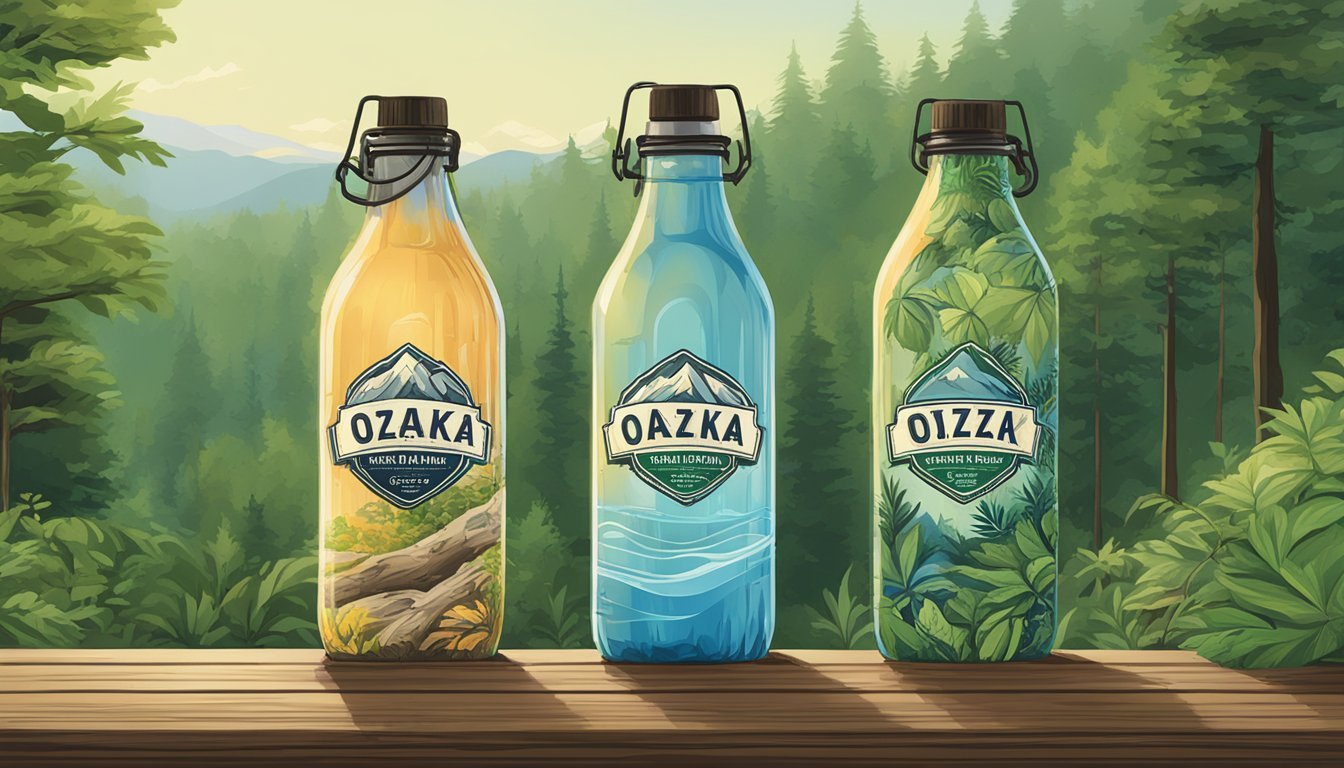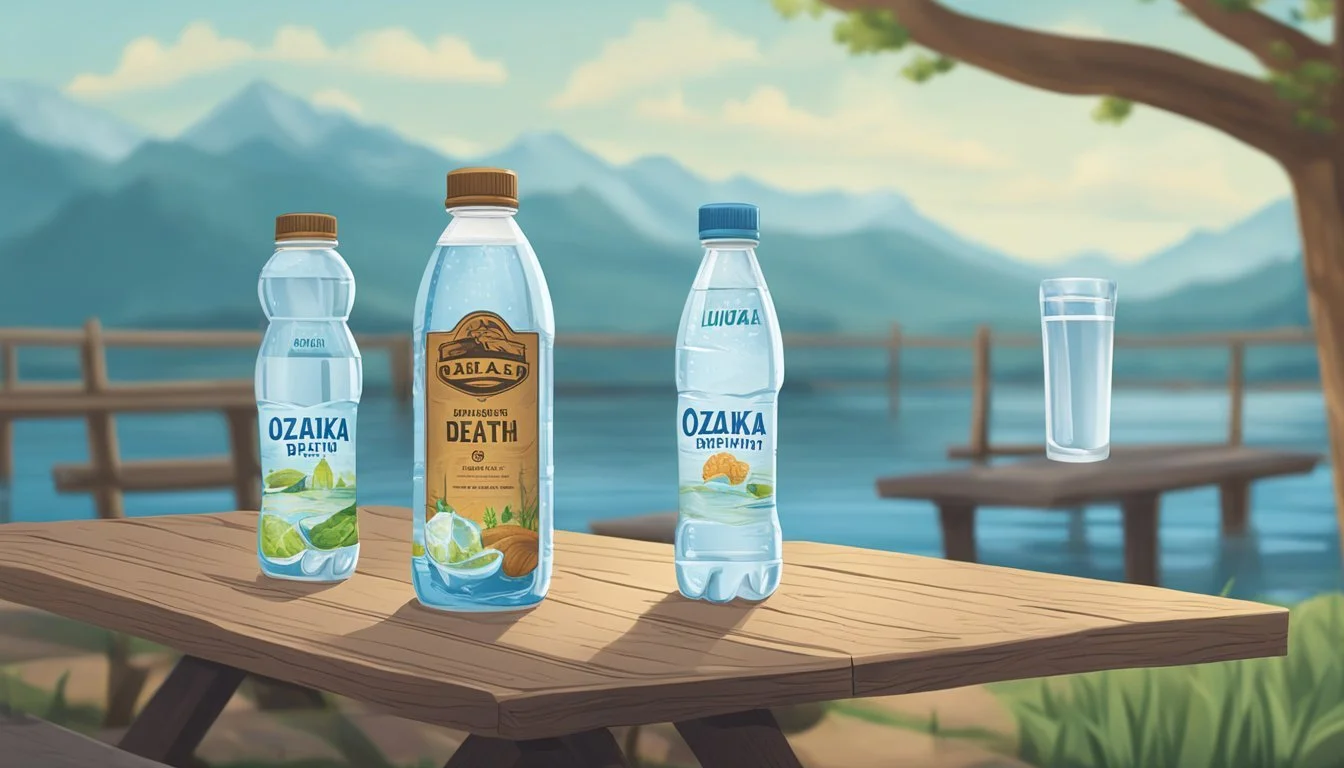Ozarka vs. Liquid Death
Comparing Bottled Water Brands
When it comes to choosing the better bottled water between Ozarka and Liquid Death, consumers often weigh factors such as taste, convenience, and health implications. Both brands present unique attributes that cater to different preferences and needs. Ozarka, sourcing its water locally from Texas, has been known for its affordability and accessibility, making it a go-to option for many.
Liquid Death, on the other hand, offers a more unconventional approach with its stark branding and commitment to sustainability. Marketed primarily towards a younger demographic, Liquid Death stands out by providing water in recyclable aluminum cans, aiming to combat plastic waste. Additionally, Liquid Death offers both sparkling and still water, adding variety that appeals to diverse tastes.
Ultimately, the choice between Ozarka and Liquid Death hinges on personal priorities: Ozarka is ideal for those seeking practical and budget-friendly hydration, whereas Liquid Death appeals to those looking for eco-friendly packaging and a bold image. By exploring what each brand offers, consumers can make informed decisions tailored to their lifestyles.
Comparing Water Sources
Understanding the origin and purification process of bottled water can be crucial for consumers. Ozarka and Liquid Death both bring unique elements to their water sourcing strategies, which impacts taste and consumer preferences.
Origin and Source
Ozarka sources its water from natural springs in Texas. These springs are known for delivering water with a distinct mineral composition, contributing to its naturally sweet taste.
Liquid Death sources its water from the Austrian Alps. The company emphasizes the purity of its water, claiming it to be free from contaminants due to its remote and pristine source. The brand offers both still and sparkling water.
Knowing the water's origin can influence consumers' trust and perception of quality. Ozarka’s local Texas springs provide a regional appeal, while Liquid Death's European source offers an exotic touch.
Natural Spring Water vs. Purified Water
Natural spring water comes directly from underground springs and is generally bottled at the source. It contains natural minerals that can influence taste and health benefits. Ozarka falls into this category, offering water rich in naturally occurring minerals from Texan springs.
Purified water undergoes extensive filtration processes, such as reverse osmosis, to remove impurities. Liquid Death, though marketed as pure due to its origin, also commits to rigorous filtration to ensure water purity. They highlight the natural purity from the source rather than added minerals.
Key differences between natural spring and purified water include the mineral content and taste profile. Spring water from Ozarka often contains minerals like calcium and magnesium, providing a unique taste. Purified water like Liquid Death focuses more on the absence of contaminants rather than mineral content.
Consumers’ choice often hinges on taste preference and perceived health benefits.
Understanding pH Levels
The pH level of drinking water is crucial as it affects both taste and potential health benefits. The pH scale ranges from 0 to 14, with 7 being neutral. Water with a pH lower than 7 is acidic, while a pH higher than 7 is alkaline.
Alkalinity and Acidity
Alkalinity and acidity indicate the chemical nature of water. Alkaline water, with a pH above 7, is often marketed as beneficial for neutralizing acid in the body and improving hydration. For instance, Liquid Death boasts a pH of 7.8+, making it slightly alkaline.
Acidic water, with a pH below 7, can have a sour taste and potentially erode tooth enamel over time. Most bottled water brands aim for a pH between 6.5 and 8.5 for an optimal balance in taste and safety.
Impact on Health and Hydration
The pH level directly influences drinking water’s impact on health and hydration. Alkaline water is believed to provide better hydration by balancing body pH and replenishing electrolytes. Ozarka water, like many natural spring waters, aims for a neutral to slightly alkaline pH, suitable for daily consumption.
Acidic water might pose health risks if consumed regularly, including digestive issues and teeth erosion. Conversely, high alkalinity can disrupt the body's natural pH if consumed in excess. Thus, knowing the pH of bottled water choices like Ozarka and Liquid Death helps in making informed decisions for optimal health.
Taste and Flavor Profiles
Ozarka and Liquid Death present distinct taste and flavor profiles influenced by their differing sources and mineral content. This section delves into side-by-side assessments and how their mineral content plays into the flavor experience.
Taste Test Assessments
Ozarka, sourced from Texas springs, is known for its clean and crisp taste. Many consumers appreciate its mild, refreshing flavor that's free from aftertastes.
Liquid Death, a more recent entrant, is recognized for its bold branding and aluminum can packaging. The taste of Liquid Death is often described as pure and refreshing, with a slight metallic hint due to the can.
In blind taste tests, preferences may vary based on individual tastes, but both waters generally receive positive feedback for their refreshing qualities.
Flavor Influenced by Mineral Content
Ozarka contains natural minerals from its spring source, contributing to its balanced taste. The mineral content in Ozarka includes calcium, magnesium, and potassium, which subtly enhance the water's flavor without overwhelming the palate.
Liquid Death, although also marketed as natural spring water, emphasizes a different mineral profile. Its water is sourced to maintain a balanced mineral content, with a slight emphasis on electrolytes that appeal to those seeking hydration benefits.
Both brands offer waters with low to moderate mineral content, making them suitable for consumers who prefer a gentle mineral flavor without overpowering tastes.
Evaluating Quality and Purity
Choosing between Ozarka and Liquid Death often comes down to their adherence to quality assurance standards and the effectiveness of their filtration processes. Both brands' claims and certifications can greatly influence decisions based on purity.
Certification and Quality Assurance Standards
Ozarka sources its water from natural springs in Texas and adheres to strict EPA standards to ensure safety and quality. They regularly conduct thorough testing for contaminants and maintain records to meet both state and federal guidelines. Liquid Death, with its mountain water, boasts rigorous quality checks that align with FDA and EPA standards, ensuring their products are free from major contaminants.
Most major water brands, including Ozarka and Liquid Death, undergo third-party auditing to certify compliance with health and safety standards. These certifications add a layer of trust for consumers concerned about water purity.
Contaminants and Filtration Efficacy
Ozarka utilizes natural spring water sources, which are subject to filtration to remove impurities like lead, arsenic, and other heavy metals. This process ensures a high level of purity. Ozarka emphasizes the absence of PFAS chemicals, which have been a concern in the bottled water industry.
Liquid Death water undergoes a robust purification process, which includes microfiltration and UV treatment. This extensive filtration effectively removes a wide range of contaminants, providing a clean and crisp taste. Liquid Death's marketing also highlights their commitment to maintaining low levels of contaminants relative to EPA guidelines, reassuring consumers about its safety and purity levels.
Packaging and Environmental Impact
Both Ozarka and Liquid Death present unique approaches to packaging and sustainability. They use different materials for their containers, and their recycling initiatives also vary significantly.
Materials Used in Bottling
Ozarka uses plastic bottles, specifically PET plastics. PET is lightweight, durable, and widely used in the bottled water industry.
Liquid Death opts for aluminum cans. Aluminum is not only more durable but also infinitely recyclable, meaning it can be reused without losing quality. This makes it an appealing choice for environmentally conscious consumers.
The use of PET and aluminum highlights a significant difference in their environmental impact.
Sustainability and Recycling Efforts
Ozarka emphasizes the importance of proper waste management and actively engages in promoting recycling initiatives. PET bottles can be recycled multiple times, which helps reduce plastic waste if correctly managed.
Liquid Death stands out due to its packaging. Aluminum cans are easier to recycle compared to plastic and require less energy in the recycling process. This aligns with Liquid Death’s marketing as an eco-friendly option.
Their sustainability efforts include campaigns to address plastic waste and promote recycling awareness among consumers.
Health and Hydration Benefits
Both Ozarka and Liquid Death offer unique health and hydration benefits through their mineral content and commitment to providing clean drinking water.
Essential Minerals for Hydration
Hydration depends not just on water intake but also on essential minerals. Ozarka sources its water from natural springs, which typically contain calcium and magnesium. These minerals are crucial for maintaining electrolyte balance, supporting muscle function, and overall hydration health.
Liquid Death also contains vital minerals. Their unflavored products, particularly Mountain Water, are known for containing natural minerals that contribute to hydration. These include calcium and magnesium, similar to Ozarka, but the exact content can vary.
The presence of such minerals ensures that both brands offer more than just simple hydration; they support critical bodily functions.
Water as a Fundamental Human Need
Access to clean drinking water is fundamental for health. Both Ozarka and Liquid Death excel in providing safe and pure water. Ozarka is noted for its crisp taste, attributed to its spring water sources, which maintain a favorable pH balance and are free from contaminants.
Liquid Death, marketed as a premium water option, prides itself on plastic-free packaging and high purity levels. This makes it an excellent choice for environmentally conscious consumers.
Both brands offer reliable hydration solutions, emphasizing the necessity of clean, mineral-rich water for both health and daily consumption.
Market Presence and Consumer Choices
Ozarka and Liquid Death target different niches within the bottled water market in the United States, affecting their market presence and consumer choices. This section examines each brand's market strength and the preferences shaping consumer behavior.
Brand Analysis
Ozarka sources its water locally from Texas, giving it a strong regional presence, particularly in the southern United States. This local approach appeals to consumers who prefer a homegrown brand. Its association with natural spring water and relatively affordable pricing enhances its appeal among everyday consumers.
Liquid Death, on the other hand, has disrupted the market with its edgy branding and aluminum can packaging, targeting younger, environmentally-conscious consumers. Its marketing strategy focuses on a bold, irreverent image, setting it apart from traditional bottled water brands like Fiji and Essentia. This unique approach has garnered a loyal following, particularly through online retailers like Amazon.
Consumer Trends and Preferences
Consumers in the bottled water industry are increasingly prioritizing sustainability. Liquid Death's use of recyclable aluminum cans aligns with this trend, attracting environmentally-aware buyers. Their market strategy resonates strongly with demographics that value eco-friendly packaging and bold marketing.
Ozarka appeals more to families and price-sensitive buyers, offering convenience and accessibility. Its strong presence in supermarkets and local stores in Texas and surrounding areas ensures steady demand. While brands like Coca-Cola's Dasani and PepsiCo's Aquafina dominate nationally, Ozarka's regional focus maintains robust local loyalty.
In conclusion, while Liquid Death capitalizes on a rebellious image and eco-friendly packaging to gain market share, Ozarka's strength lies in its regional loyalty and everyday affordability. These differing strategies reflect broader trends and preferences within the bottled water market.
Cost and Accessibility
Understanding the cost and accessibility of Ozarka and Liquid Death offers insight into which brand might be more convenient for your budget and daily needs. Cost considerations include pricing per bottle and bulk purchase options, while accessibility spans distribution networks and store availability.
Comparative Pricing
Ozarka is known for its affordability, particularly in its home region of Texas. Pricing can vary by store and location, but purchasing in larger quantities often reduces the cost per bottle.
Liquid Death, marketed as a premium brand, generally comes at a higher price point. It offers both sparkling and still variants, available in single cans or multi-packs. This appeal to niche markets and environmental-conscious consumers partly drives its pricing strategy, making it costlier than Ozarka.
Brand Cost per Bottle (Approx.) Bulk Purchase Options Ozarka $0.10 - $0.15 Yes, discounts apply Liquid Death $1.50 - $2.00 Yes, multi-packs
Distribution and Retail Availability
Ozarka has widespread distribution across the United States, primarily focused in convenience stores and major retail chains in the southern regions. Its strong regional presence ensures easy accessibility for consumers looking for reliable drinking water at a lower cost.
Liquid Death, while less ubiquitous, has built a significant retail presence through partnerships with several supermarkets and online platforms. Its availability extends to convenience stores such as 7-11 and Whole Foods, catering to both mainstream and niche markets. While it may not be as widely available as Ozarka, its targeted distribution aims to provide ease of access to its specific consumer base.
More About Ozarka
Mountain Valley Spring Water vs Ozarka: Which Bottled Water is Better?
Ozarka vs Kirkland Signature: Which Bottled Water is Better?
Ozarka vs Richard's Rainwater: Which Bottled Water is Better?
Ozarka vs Whole Foods Italian Still Mineral water: Which Bottled Water is Better?
More About Liquid Death
Aqua Carpatica vs Liquid Death: Which Bottled Water is Better?
Core Hydration vs Liquid Death: Which Bottled Water is Better?
Hawaii Volcanic vs Liquid Death: Which Bottled Water is Better?
Hawaiian Springs vs Liquid Death: Which Bottled Water is Better?
Ice Mountain vs Liquid Death: Which Bottled Water is Better?
Icelandic Glacial vs Liquid Death: Which Bottled Water is Better?
Liquid Death vs Cascade Mountain: Which Bottled Water is Better?
Liquid Death vs Crystal Geyser: Which Bottled Water is Better?
Liquid Death vs Crystal Lake: Which Bottled Water is Better?
Liquid Death vs Essence pH10: Which Bottled Water is Better?
Liquid Death vs Kirkland Signature: Which Bottled Water is Better?
Liquid Death vs Proud Source: Which Bottled Water is Better?
Liquid Death vs Richard's Rainwater: Which Bottled Water is Better?
Liquid Death vs Simple Truth: Which Bottled Water is Better?
Liquid Death vs Talking Rain AQA: Which Bottled Water is Better?
Liquid Death vs Whole Foods 365: Which Bottled Water is Better?
Liquid Death vs Whole Foods Italian Still Mineral water: Which Bottled Water is Better?
Mountain Valley Spring Water vs Liquid Death: Which Bottled Water is Better?
Nestle Pure Life vs Liquid Death: Which Bottled Water is Better?
Poland Spring vs Liquid Death: Which Bottled Water is Better?
Purely Sedona vs Liquid Death: Which Bottled Water is Better?
San Pellegrino vs Liquid Death: Which Bottled Water is Better?
Solan de Cabras vs Liquid Death: Which Bottled Water is Better?








